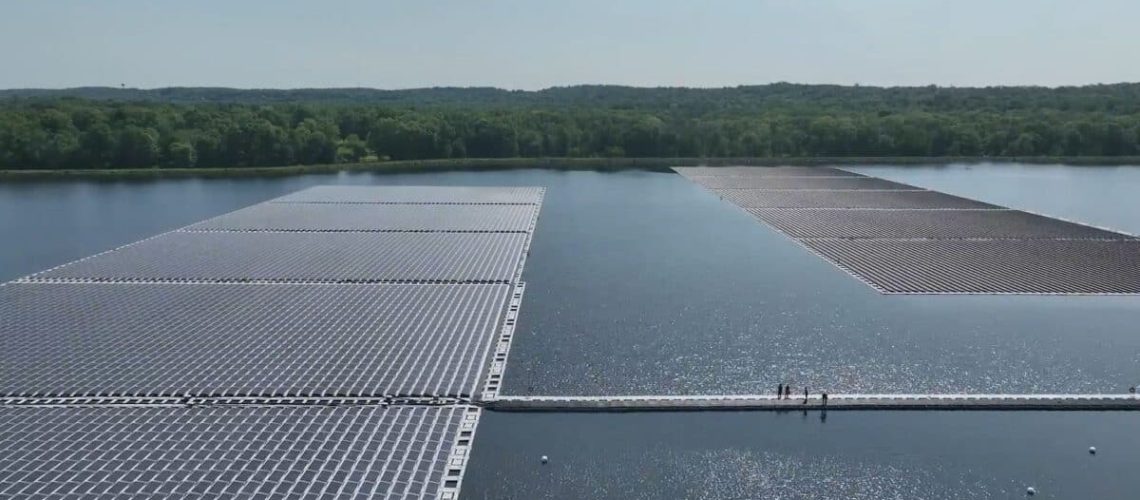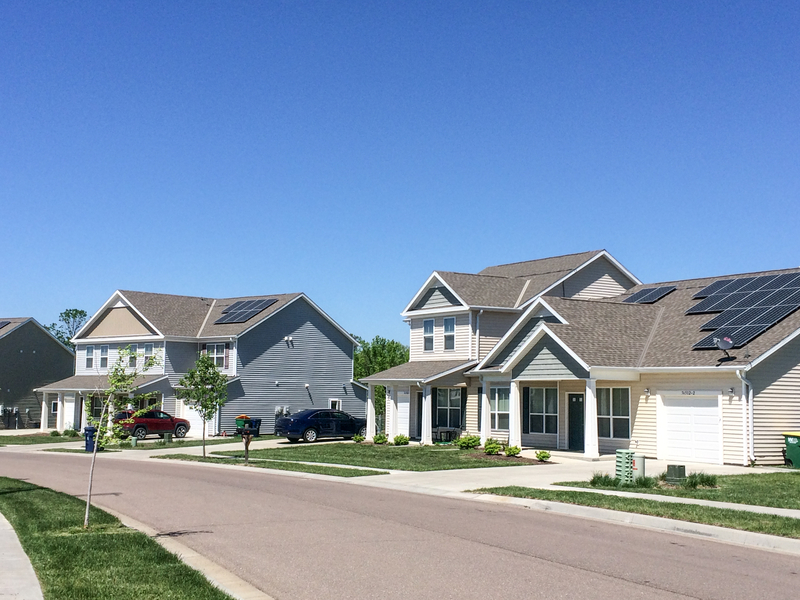North America’s largest floating PV plant is now online, providing critical resource support while occupying no land area.
A floating solar array is actively providing critical resource support in Short Hills, New Jersey. The 8.9 MW array, now the largest active floating PV facility in North America, will provide approximately 95% of the electricity needs for the Canoe Brook water treatment plant.
The floating PV array is mounted on plastic floats that are moored to the reservoir’s floor. Floating PV is typically left for human-made bodies of water, preventing the risk of tides or saltwater degrading the equipment.
The array spans 17 acres of water surface and is comprised of 16,510 panels. water treatment plant serves over 84,000 homes and businesses in the area. The array cost $7.2 million to build, said Rettew, a Pennsylvania-based firm that constructed the project.
Researchers from the University of Louisiana at Lafayette and State University of Ponta Grossa in Brazil studied the beneficial effects of mounting PV on water, which cools the array, offering improved operational efficiency. The scientists compared the efficiency of the floating solar module with ground-mounted systems, as modeled by Sandia National Laboratories. The results show that a maximum of 3% efficiency gain is possible, compared to the ground-mounted Sandia model.
“It takes a lot of energy to pump that water,” said Mark McDonough, president of New Jersey American Water. “When we can use a cleaner, greener, more efficient energy source, we want to seize that opportunity.”
The project is owned and operated by NJR Clean Energy Ventures. Since 2009, the company has invested over $1 billion in commercial and residential solar projects. As one of the largest solar owner-operators in the state, the company maintains 65 commercial solar assets across four states and a portfolio of more than 440 MW of installed capacity. The Canoe Brook marks the second floating PV project in the company’s portfolio, adding to the 4.4 MW array activated in 2020 in Sayreville, New Jersey.
“Floating solar technology creates new opportunities for underutilized bodies of water, allowing space that would otherwise sit vacant to enable large-scale renewable energy generation, which helps to bring the benefits of clean energy to even more customers,” said Robert Pohlman, vice president, NJR Clean Energy Ventures.
Floating photovoltaics, sometimes referred to as “floatovolataics,” are expected to establish a sizeable new global market by 2026, said Global Industry Analysts (GIA), which has projected a 4.8 GW deployment by that year.
Generally, 1 MW of FPV plant covers water bodies of about 17 acres to 25 acres and can generate electricity of 1500 MWh, said GIA.
The market is currently pegged at about 1.6 GW globally, and GIA predicts it will move at a compounded annual growth rate (CAGR) of 33.7% by 2026, reaching 4.8 GW. The Asia-Pacific region is expected to be the largest market share at around 60%, with China the fastest growing market with a CAGR of 59.4%. Floating PV’s cost is much higher than that of stationary solar panels, the key hinderance in its growth, said GIA.
GIA said the U.S. has over 24,000 human made water bodies that are anticipated to be suitable for floating PV development.





